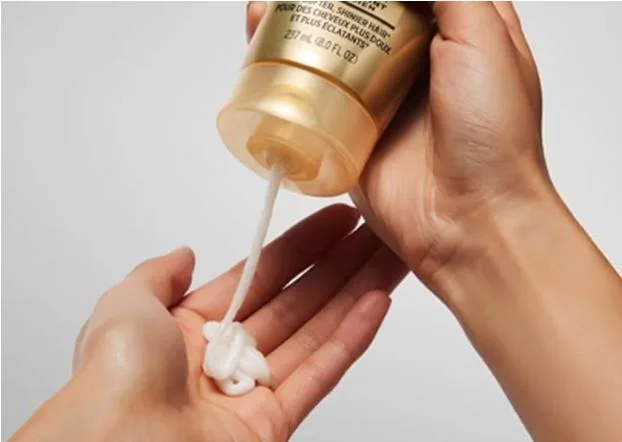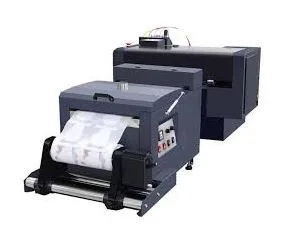The Role of Modern Manufacturing in Everyday Personal Care Products
The personal care industry has become a very technical sector. The production lines have become a mixture of automatization, accuracy and safety of products. A trail of mechanical and chemical processes is behind every packaged product. Two very different yet interconnected elements in this supply chain are the bottle capping machine and the hair conditioner.
The latter is a central unit of equipment in the manufacturing plants. So what are you waiting for? Let’s begin with our article!
The Importance of Hair Conditioner in the Personal Care Market:
Hair conditioner has become a staple in personal grooming routines. It is meant to enhance the texture of the hair, make it less tangled, and safeguard strands against breakage. It normally contains moisturizers, proteins and conditioning agents. These ingredients help to smooth the cuticle of the hair, seal moisture and shine.
Hair conditioners are available in various forms. Most common are rinse-out conditioners, which are used after shampooing and rinsed out after several minutes. Leave-in conditioners are less heavy and stay in the hair to give persistent benefits. Deep conditioning treatments are intensive nourishing treatments, which can be applied on a weekly basis to repair broken hair.
Consumer demand for hair conditioners continues to rise. The hair health awareness, fashion, and beauty marketing are the reasons behind its growth. The product is currently sold all over the supermarkets, salons and online. But there are complicated procedures in manufacturing it between the formulation and the shelves in stores.
From Formula to Packaging: The Role of the Bottle Capping Machine
Once a hair conditioner formula is developed, tested, and approved, it moves into the packaging phase. This is where the bottle capping machine becomes important. The designed machines are meant to cap bottles with a high degree of accuracy and speed. They may have simple functions but their significance in the production process cannot be overemphasized.
A bottle capping machine ensures that each unit is sealed properly. This eliminates leakage, preserves the product and makes it safe to transport. The cap also serves as a barrier against contamination, extending the shelf life of the hair conditioner.
Capping machines are of various types. Inline cappers are suited in continuous production lines. Chuck cappers offer high torque precision, which are usually applied in the specialized or premium packaging. Snap cappers are applicable to press-on lids and the spindle cappers apply spinning disks to tighten the screw caps.
The current capping machines are adjustable so as to be able to fit different shapes and sizes of bottles. This versatility enables the manufacturers to operate various lines of products without significant equipment adjustments. For hair conditioner producers, this means the same line can handle standard bottles, travel-size containers, and salon-exclusive large volumes.
How Packaging Influences Consumer Perception?
The appearance and quality of a hair conditioner’s packaging influence purchasing decisions. The packaging is a key factor in determining whether the most efficient formula will be purchased or not; it may look cheap, damaged or unsafe. An accurately capped cap speaks of quality and reliability. It guarantees the consumers that the product is fresh and non-contaminated.
The manufacturers tend to spend as much in the packaging as they spend in the formulation of the products. A premium hair conditioner may feature uniquely designed caps, dispensing pumps, or flip-top lids for convenience. The bottle capping machine must handle these variations without compromising on efficiency.
Integration of Automation in Personal Care Manufacturing:
Automated capping systems have revolutionized efficiency in production. Manual capping is time-consuming, unreliable and laborious. Automation provides consistent application of torque, consistent sealing and increased production rates. For large-scale hair conditioner production, this can mean thousands of bottles capped per hour.
Quality control is enhanced by automation as well. The current versions of capping machines have incorporated torque monitoring systems which identify loose or over-tightened caps. This assists in avoiding recalls of products or customer complaints. Also, the machines may be combined with labeling, filling and sealing units, forming a full packaging line.
Quality and Safety in Hair Conditioner Packaging:
Hair conditioners, like other cosmetic products, must comply with safety regulations. The product has to be packaged in a way that it is not subjected to microbial contamination, oxidation, and degradation of ingredients. A defective seal may cause spoilage or ineffectiveness of the product.
The bottle capping machine plays a central role in maintaining these safety standards. It makes sure that caps are put on in the right tightness without destroying the bottle neck or cap threads. Induction sealing units are provided on some machines and apply an inner protective seal under the cap. This added obstacle provides tamper evidence, which makes customers confident of the integrity of the products.
Meeting Consumer Expectations for Sustainable Packaging:
Although the primary role of a bottle capping machine is functional, it also supports evolving trends in packaging. Many hair conditioner brands are moving toward recyclable or reusable bottles. Equipment has to process such materials at high speeds and with good seal quality. Plastic bottles, bioplastics and even aluminum bottles are light and need careful treatment during capping.
The compatibility with these new materials is guaranteed by adjustable capping systems. The production of eco-friendly packaging can be implemented by manufacturers without the need to change the whole production lines, which will lead to cost reduction and achieving the environmental goals.
Future Trends in Hair Conditioner Manufacturing and Capping Technology:
The technological changes keep on affecting the packaging and product formulation. In hair conditioners, the focus is shifting toward personalized solutions, natural ingredients, and multifunctional benefits. The technology of packaging is keeping pace and the caps are provided with precision dispensers, one handed ease of operation and child safety.
Smart sensors, data analytics, and machine learning are being applied in the capping industry to production lines. They can forecast maintenance requirements, minimize downtimes and enhance operational efficiency.
The next generation production line can include a formula mixer that is linked to filling and capping stations without any direct human intervention and is fully controlled by automation. This would eliminate human error, increase the rate of production and quality.
Conclusion:
The hair conditioner is more than a cosmetic product. It is a complicated production process that encompasses formulation science and regulatory compliance and packaging accuracy. The bottle capping machine is a vital link in this chain, ensuring every product is safe, fresh, and ready for consumer use.
With the increased level of personal care manufacturing, the combination of quality formulations and the stable capping technology will remain a market determinant. As much as it is dealing with millions of units of products of global brands or smaller productions of niche markets, efficiency and precision are key factors to success.




